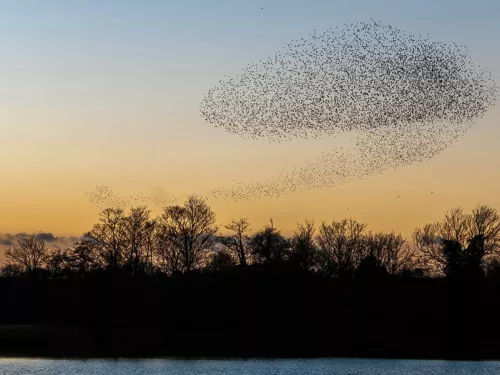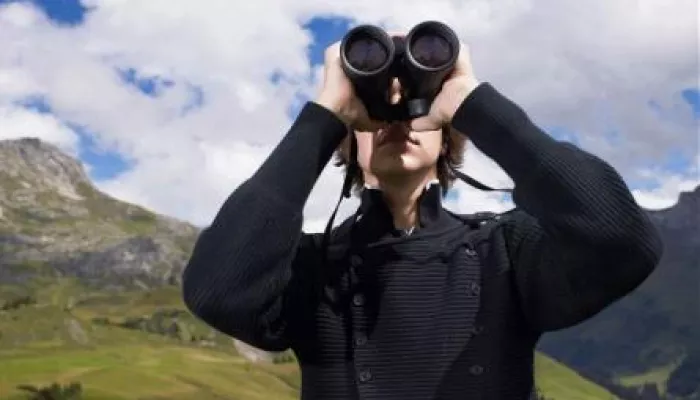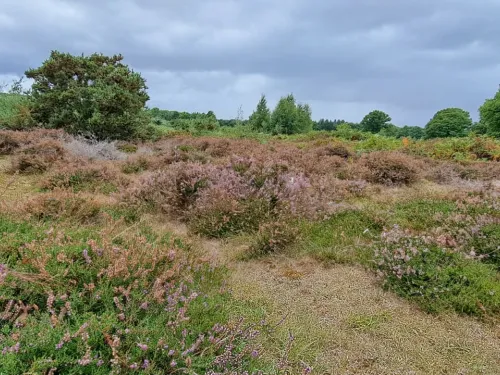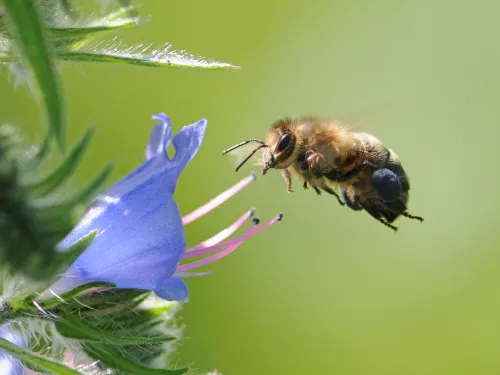1. Comfort – one of the most important considerations, they should feel comfortable to hold and use, especially the focusing wheel – it should be smooth and fast to use – if it is stiff and slow you won’t focus in time and the bird will fly away!
2. Try before you buy – many outlets hold field days, or have shops that will allow you to try the binoculars on offer before you purchase.
3. What do those numbers mean?! The small number refers to the lens near your eye - the bigger number the greater the magnification. The larger number refers to the lens nearest the bird - the larger number the more light they gather, larger lenses at the front give clearer images in lower light conditions. 8 x 42 or 10 x 42 are the most appropriate for bird and other wildlife watching. It is tempting to go for greater than 10 x 42, however these models will be larger and heavier, making them difficult to hold steady for extended periods, leading to shaky images.
4. Design – there are two main designs: porro-prisms have a 'traditional', stepped shape with an angled body, while roof-prisms have a straight-through appearance. They tend to be more compact, and many people find them more comfortable to use. Compact binoculars are great if size and weight are your most important considerations, however they fall down on light-gathering capability and field of view. Rubber coatings offer increased protection, and lens and prism coatings enhance light transmission and image quality.
5. Budget – you don’t need to spend a fortune, perfectly good models can be bought for under £100, though below £200 there is a lot of variation in quality between brands – see tip 2!. Once you reach the £800 and above mark it’s all very equal. At the entry level porro-prisms are a better bet, as roof-prisms are more complex and the quality is harder to achieve within a small budget.
6. Brand - good entry level brands include Nikon, Opticron, Kowa, Hawke and RSPB. Our visitor centre at Sevenoaks Wildlife Reserve stocks the Hawke range, and will let you get a feel before you splash the cash.
7. Set them up correctly - Look through the binoculars and open/close the barrels until you see only a single image in a perfect circle. To look through binoculars with both eyes, you need to perform diopter adjustment, as most people have a different visual acuity between left and right eyes. Without doing this adjustment , you will not see sharp, crisp images because one eye will see objects in focus while the other does not. How you do this varies with different models – search ‘binocular dipter adjustment’ for more information.
8. Use them correctly – It is important to minimise hand shake: Don’t hold them too close to your face – the unsupported weight will make them less steady. Don’t stand with your elbows out like wings, instead hold them closer together in front of your chest. Try supporting the entire barrel with you hand pressed against one side of your face to brace them, a little like a tripod - this can really steady the image and make viewing for extended periods more comfortable (see photo). Try leaning against a handy tree, hide or fence post. Sit on a portable stool and rest your elbows on your knees for more comfortable extended viewing.
9. Finding the bird! The one problem novice binocular users typically encounter more than any other is getting their bins pointed right at the subject. This can be a problem even when the subject is sitting still in an obvious place. Practice the following:
- Looking with your naked eyes, find a bright leaf in a distant tree, or a certain spot on a distant building, and lock you eyes onto it. Now, without removing your eyes from that spot, bring your binoculars up to your eyes and into alignment with your view.
- With practice you’ll find that locking your eyes in place and bringing the bins into alignment really works. This will make it easier for you to find birds, even if a bird is moving.
- When locking your eyes onto a distant bird, note some other feature or landmark near the bird’s location. This can be a notch in a tree’s outline, a brightly coloured leaf, or even a passing cloud. Note where the bird is in relation to this landmark and it gives you another reference point to use when you swing your binoculars into place.
10. Confidence - Don’t be intimidated by people with more expensive models, it doesn’t mean they see more wildlife!




